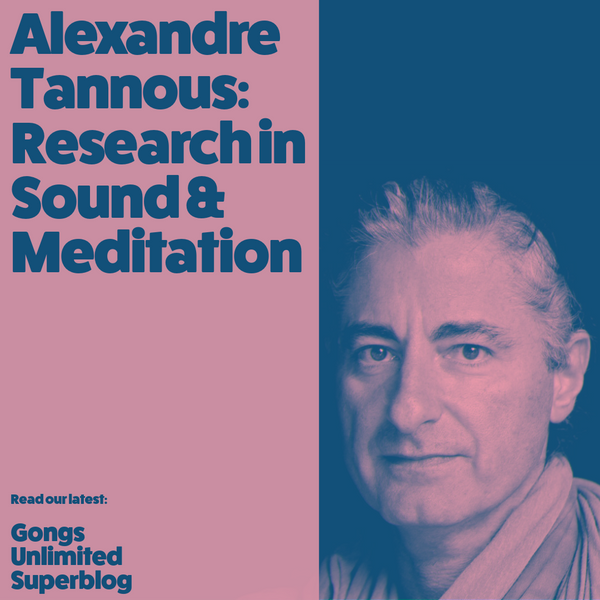We’ve written before about the calming effects of Binaural Beats (click here to read that blog post). There's no short supply of “binaural beats” videos and audio recordings on the internet, usually paired with claims that you can tune your brain to different brainwave states by listening to sound waves of the same frequency.
They call this “entrainment”. As an example, the idea is that you can listen to a 10 Hz Binaural Beat and your brain activity will start firing at 10 Hz, which is the Alpha state, a state of active focus and reflection (more on each brainwave state below).
To refresh your memory, a Binaural Beat happens when you play two tones that are a few Hz apart – the interplay between the different sound waves will create an illusion of a third tone. For example, if you play a tone at 150 Hz in one ear and 140 Hz in the other, you’ll perceive a third tone at 10 Hz. The human ear usually can’t hear below 20 Hz, so it’s a really useful trick to be able to perceive extremely low frequencies.
Here's a visualization of binaural beats. The top two waveforms are the two slightly different tones. The third waveform shows the perceived third tone illusion, created by the difference between the first two.

When I wrote that original blog post about binaural beats, I’d read a few different scientific studies and reviews that suggested the science is still out on entrainment. While it's clear from experience that the act of listening to Binaural Beats can be calming and relaxing, it was unclear whether or not their soothing nature was related to entrainment of brain wave states, or whether it was simply an extension of the benefits of listening to soothing music.
I looked at the research again this week. I wanted to see if any new research had been done since I originally wrote that blog entry. In a sample of fourteen different studies, five of the studies reported results that were in line with the entrainment theory, while eight studies reported contradictory results, and one showed mixed results.
The review of these studies concluded that we need more research but also that the methodology needs to be discussed and agreed upon so that all future research is operating on the same assumptions and definitions of "entrainment". To put it simply – we still don’t know enough about the processes of the brain to be able to effectively do broad research on something like entrainment while getting consistent results.
(Read the that review of the research here: https://www.ncbi.nlm.nih.gov/pmc/articles/PMC10198548/)
There has also been wide research exploring the changes in brainwave activity that occur from listening to music and other auditory stimuli. While there is evidence to suggest that different types of music and sounds may increase activity in certain areas of the brain at certain frequencies and amplitudes, it depends on many different factors: the type of music, the piece itself, the listener, and their personal feelings about the music. Again, more research is needed (and is being undertaken).
Regardless, it seems clear that there is a connection between activity in the brain and the process of listening mindfully to music and other audio stimuli.
(Read more on the science behind brain wave states and their relationship to music here: https://www.ncbi.nlm.nih.gov/pmc/articles/PMC6130927/)
If you’re not familiar with the different brainwave states, read on to learn about the different rhythms of the brain.
Brainwaves are measured with a medical test called an EEG. With an EEG, the patient has sensors attached all around their head to measure the frequency and amplitude of electrical signals in their brain. Here's a visualization of the measured activity of each brainwave state (I didn't make this, I found it on the internet), followed by a description of each state and its function.

Delta Waves | Delta activity can be measured between .5 and 4 Hz. This state is usually associated with deep sleep and it’s essential for rest and recovery. During this state of activity, the nervous system can relax, anabolic hormones start to repair tissue and stabilize our energy levels, and neurons form new connections essential to learning and memory.
Theta Waves | Theta activity can be measured between 4 and 8 Hz. This state is associated with creativity, meditation, mindfulness, daydreaming, and relaxing into the body, but remaining awake. This kind of meditative state could be brought on by a rhythmic activity like walking, biking, or running.
Alpha Waves | Alpha activity is measured between 8 and 13 Hz. This state is associated with resting wakefulness. This could be someone who has just completed a work task and has decided to sit and reflect while taking a break, or taking a walk in the garden in the middle of the day. The mind is active and the body is calm, taking time to reflect and learn from our experiences. In this state, metacognition occurs, a state where you’re aware of your thoughts and feelings and you can look at the big picture.
Beta Waves | Beta activity is measured between 13 and 32 Hz. This state is associated with deep focus and concentration, performing work and other activities at a high level and navigating stressors. This can burn up a lot of mental and physical energy, but this is where you’re able to concentrate, focus on work, and execute complex tasks.
Gamma Waves | Gamma activity is measured from 32 to 100 Hz. This state is less common than the other states and is associated with peak performance, the flow state, when the body and brain are in the zone and you’re firing on all cylinders. In this state, you may feel like you’re on top of the world and you can operate at the highest level, completing any and all tasks that lay before you.
Each of these states of activity is essential to healthy functioning and they all feed off of each other. You can’t operate at your peak in the Beta and Gamma states if you aren’t getting enough sleep (Delta), meditating and grounding (Theta), or taking breaks to reflect and learn (Alpha).
While the jury is out on whether or not you can tune your brain to specific states with different sounds and frequencies, research does show that music and sound can help to relax and focus the mind, especially when listening to sounds that you personally consider pleasant or calming.
We also know that certain activities are associated with different brainwave states, so while you may not be able to entrain your brain from Delta to Gamma with a Binaural Beat, you might be able to activate different states by trying different activities, including listening to music or other sounds.
For example, if you're trying to get a lot of focused creative work done (Beta or Gamma state) but you just can’t seem to get yourself in the right state of mind, why not take a little break to let your brain shift to a different state? Maybe your brain needs to recover, or maybe you need some quiet time to reflect on an idea to gain a new perspective.
Listen to some soothing music, play your crystal bowls or gongs, meditate and get into a Theta state so your body and mind can relax. Take a walk through the neighborhood and listen to the birds, smell some flowers, start to reawaken your body and mind while you reflect on the work you’ve been doing to get into an Alpha state. Then you can try easing yourself back into the workflow of the Beta and Gamma state.
If you’re still struggling, check in with yourself – did you get enough sleep last night? If not, maybe you didn’t spend enough time in the Delta state for your body to rest, recover, and rebuild connections in the brain. Maybe you need a nap, or maybe you just need to take the day off if you can so you can let your body and mind recover.
As you go through your day – working, meditating, creating, relaxing – check in with yourself and reflect on these different brainwave states, see if you can identify which state you think you might be using as you participate in your activities throughout the day.
If you’re struggling with something, see if a change in activity or stimuli helps to get you back in a functional rhythm that aligns your mind, body, and spirit.



M H
Author